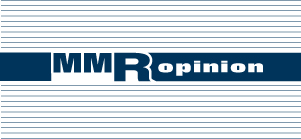The convention season began in earnest earlier this month with the NACDS Regional Chain Conference. This event, traditionally one of the more anticipated on the NACDS meetings calendar, is noted for setting the tone for the many meetings, conferences and trade shows that follow throughout the year. Devoid of the country’s largest retailers, and the often distracting sideshows they bring to industry gatherings, the regional chain meeting is usually all about business — keeping it, enhancing it, broadening it.
Not this year.
 If the regional conference was a preview of coming attractions, this year’s meeting was interrupted by issues that could have a significant impact on mass retailing and the efforts of individual companies to advance their businesses. There is concern, for instance, over the future of taxes. Will they increase? Decrease? Remain the same? This much is certain, even now: The tax structure in a Trump administration will ultimately bear little resemblance to the tax system of the previous administration.
If the regional conference was a preview of coming attractions, this year’s meeting was interrupted by issues that could have a significant impact on mass retailing and the efforts of individual companies to advance their businesses. There is concern, for instance, over the future of taxes. Will they increase? Decrease? Remain the same? This much is certain, even now: The tax structure in a Trump administration will ultimately bear little resemblance to the tax system of the previous administration.
Then there are the questions that are now swirling about the pharmaceutical industry. More specifically, what is the future of pharmaceutical pricing? And how will that future impact retail pharmacy? It is safe to say that pharmacy is a more critical component of mass retailing today than it has ever been. Factor in the uncertain future of the Affordable Care Act, which the Trump presidency intends to overturn or amend, and the mass retailing community can be excused for being confused about what that future will be.
These, then, were among the overriding concerns for the retailers and suppliers who met in Palm Beach, Fla., earlier this month. Amidst these concerns a meeting unfolded, one that sought to untangle the issues and events that typically surround the Regional Chain Conference. Attendees were understandably curious about the eventual outcome of Walgreens Boots Alliance’s bid to acquire Rite Aid Corp., an event that has now been postponed until midyear.
A corollary issue revolved around future acquisitions that might be in the wind or, failing that, the possibility that chain drug retailing might be entering a period of reduced growth through mergers or acquisitions. Certainly such a moratorium would appear to make sense, given the relatively few candidates apparently in the merger market.
Of course, the changing character of chain drug retailing — or mass retailing, to state the state of the industry more accurately — is evident to those attendees who paid attention. The number of pure drug chains, those retailers who have built a general merchandise business around a pharmacy core, is declining. Increasing their representation relative to the whole are grocery retailers and a range of companies that can be lumped under a “specialty” heading.
These non-drug chains received much attention from the suppliers at the meeting, mostly because they are newcomers and a natural source of curiosity and interest. Among the nontraditional attendees was H-E-B, a formidable grocery retailer that also boasts the current NACDS chairman.
But other nontraditional chains also attracted attention, sometimes at the expense of conventional regional drug chains that have been attending these meetings since the days when they were identified as “small” chains.
To summarize, a new era has arrived, one marked by a new administration and a new retail lineup, one more inclusive and, in its way, more impressive than the roster that preceded it. Around the corner are the major industry meetings, a series that will likely exhibit the same new lineup as the Regional Chain Conference — and, in the bargain, rearrange still further a mass retailing structure already in a state of flux and perhaps lasting disarray.




You must be logged in to post a comment Login